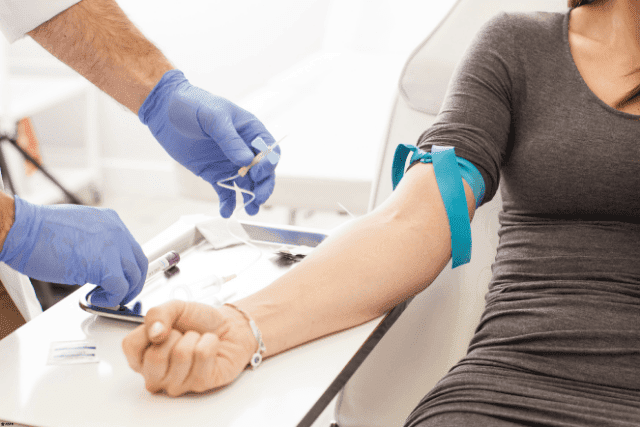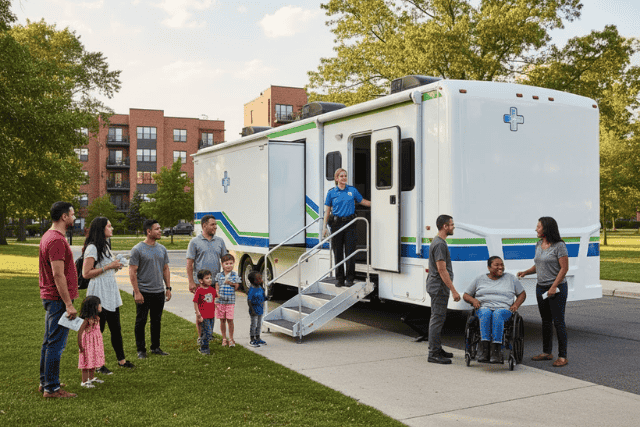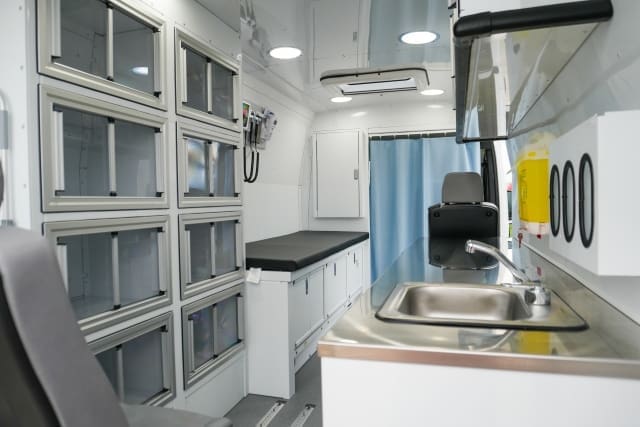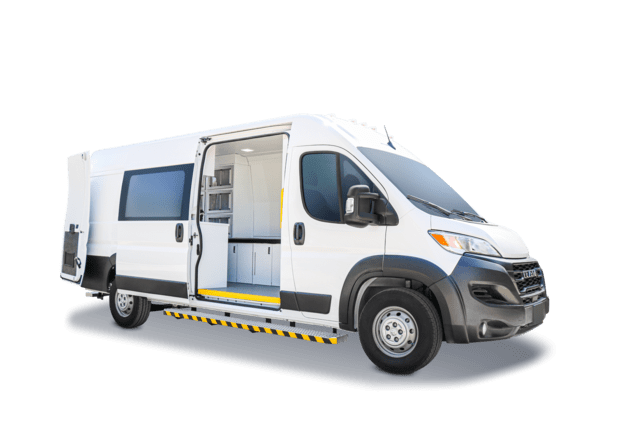The cost of a mobile blood draw unit in the U.S. ranges between $170,000 to $290,000. If you’re trying to budget for one, you may feel stuck. You want to expand blood testing or donation services, but you don’t know what it will take financially. That gap creates stress. Without a clear plan, your community may face longer waits, fewer blood donations, and limited access to testing.
Now, picture the opposite. A mobile blood draw unit lets you bring testing and donation services directly to the people who need them. It cuts barriers, saves time, and helps your program grow. But here’s the part you’re probably wondering: why does the price range so much? Keep reading, because we’ll break that down.
At AVAN Mobility, we’ve been building mobile medical units for more than 10 years. We’ve manufactured over 150 vehicles across North America, partnering with groups like Pacific Clinics in California and the Community Clinic of Southwest Missouri. We listen first, then design around your program, your patients, and your goals. While we know we’re not the only builder out there, we’ve built a reputation for vehicles that help save lives and expand access to vital services.
Here’s what you’ll learn in this article:
- What impacts the mobile blood draw unit cost
- Tips for budgeting wisely
*Keep in mind that all pricing in this article is just estimates, subject to change, and is based on a RAM Promaster van chassis.
What impacts the cost of a mobile blood draw unit?
So, you know the price range of a mobile phlebotomy unit now, but what actually makes one unit cost $170,000 to $290,000? The truth is, mobile blood draw units are not one-size-fits-all. The final cost depends on several factors that shape how the unit fits your program, your staff, and your community’s needs. Let’s walk through the biggest ones.
1. Customization: The biggest factor in mobile blood draw unit cost
When we talk about mobile blood draw unit cost, the number one thing that makes the price jump is customization. Think of it like buying sneakers. The plain white pair gets the job done, but if you start adding memory foam soles, flashy colors, or your name stitched on the side, the price climbs. Mobile phlebotomy units work the same way. A basic setup starts closer to $170,000, but the more features you add to support your program, the closer you’ll be to $290,000.
Here’s how different options affect your mobile blood draw services and why they may be worth it:
Awning: $5,000
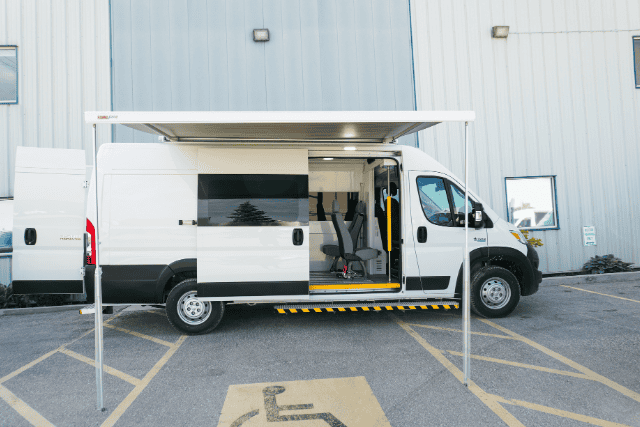
Running mobile blood draws in sunny states like Arizona can feel like standing in a frying pan. An awning gives shade, keeps staff cooler, and offers donors a little privacy as they wait.
Extra windows: $2,000 each
Natural light can completely change the feel of your unit. Extra windows make your mobile blood collection area brighter and less cramped, which helps patients relax.
Additional lighting: $1,500

Ever tried to draw blood in a poorly lit room? That’s like trying to thread a needle in the dark. Extra lighting helps your team stay accurate and safe, especially if you’re running mobile phlebotomy services during evening hours or in cloudy climates.
Individual seating: $1,500
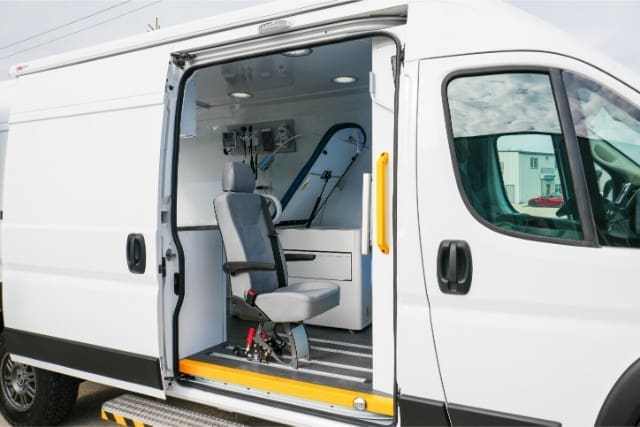
Adding individual seating creates comfort and dignity, making your mobile phlebotomy unit feel more like a proper clinic.
Medical equipment: $2,500–$75,000
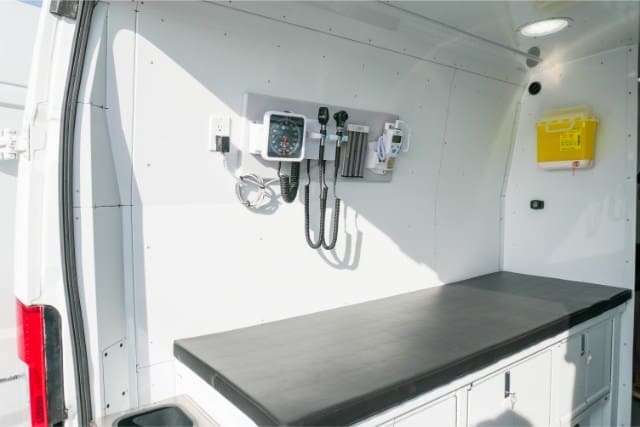
This is the big-ticket category. From small diagnostic machines to portable X-rays, the right equipment expands the scope of your mobile phlebotomy services. It’s also where costs swing the most.
Tinted and locking cabinets: $2,000
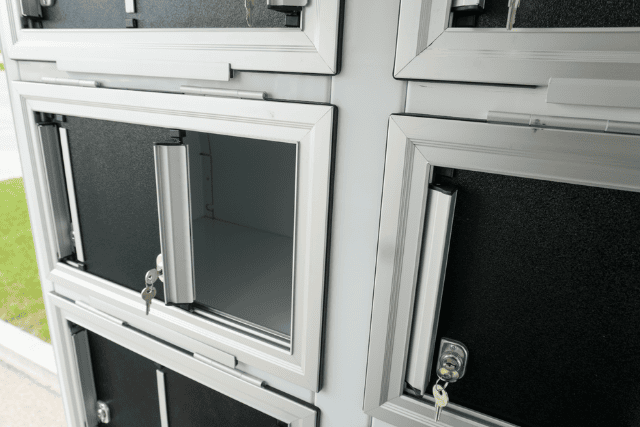
Supplies need to stay safe. Cabinet locks and tinted glass protect medical gear and keep things organized.
Why is customization so important?
At the end of the day, these features are about making your mobile blood draw services work better. The right mix of upgrades can:
- Create a safer and more comfortable environment
- Help staff work faster, more efficiently, and with fewer mistakes
- Give patients dignity and peace of mind
- Protect your equipment and supplies
A program in Montana may value extra storage and heating, while one in Florida might need more windows and a higher-capacity AC system. The point is that customization shapes how well your mobile blood draws serve your community.
So when you look at the mobile blood draw unit cost, remember this: The features you choose are the difference between a basic unit and a tool that truly supports your mission.
2. Additional mobile blood draw unit costs you can expect
When you look at the mobile blood draw unit cost, it’s natural to focus on the main number. But just like ordering pizza, it’s often the delivery fee, tax, and “service charge” that make you double-check the bill. Nobody likes hidden costs, so let’s break down the extra expenses you’ll want to plan for when budgeting for a mobile phlebotomy unit.
Taxes: Vary by state
Every state handles taxes differently, and that can add up fast.
New York example: On a $225,000 mobile blood draw unit, you’d pay the state’s 4% sales tax, plus an average local rate of 4.25%. That equates to about $18,562.
Delivery fees: Around $6,500
Getting a mobile phlebotomy unit from the factory to your location is not a simple drive down the street.
- Why it costs this much: These vehicles are large, custom-built, and require specialized trailers and expert drivers to handle them safely.
- Scope: Logistics include planning the route, handling permits if needed, and making sure the unit arrives damage-free.
- Impact on your program: Proper delivery ensures your unit is ready for mobile blood draws and mobile phlebotomy services from day one.
Administration fee: $1,000
This fee covers the behind-the-scenes work that keeps your project on track.
- Includes: Compliance checks, documentation, and coordination between your team and the manufacturer.
- Purpose: Ensures all the paperwork and details are correct so construction and delivery run smoothly.
Deposit: $50,000
Your deposit is the first step in making your mobile blood draw unit a reality.
- Why is it required? Secures your spot in our production schedule.
- Impact: Signals our team to start ordering materials and preparing your build.
- Peace of mind: Guarantees that your program moves from planning to production without delays.
What are some budgeting tips for mobile blood draw units?
Planning for a mobile blood draw unit cost can feel overwhelming, but a clear budget makes everything easier. Here are some high-level, actionable tips to help you stay on track while building a mobile phlebotomy unit that works for your program.
1. Start with the base price
Know the starting cost for a basic mobile blood draw unit. This gives you a foundation to plan your upgrades and avoid overestimating. Most units start around $170,000, so use that as your baseline.
2. Factor in customization
Decide which features matter most for your program. Some upgrades, like extra lighting, seating, or awnings, can improve safety and comfort, but they add to the cost. Make a list of “must-haves” versus “nice-to-haves” to guide your spending.
3. Include additional fees
Remember taxes, delivery fees, administration, and deposits. Planning for these upfront keeps your budget realistic. For example, a unit in New York could add nearly $19,000 in taxes alone.
4. Build in a contingency
Unexpected costs can happen, like last-minute equipment needs or minor modifications. Adding a 5–10% buffer to your budget helps you handle surprises without stress.
5. Prioritize long-term value
Think about how each investment impacts your program over time. Spending more upfront on durable equipment, better lighting, or secure storage can save money and headaches in the long run.
6. Track everything
Keep a detailed budget spreadsheet with each line item, from base price to delivery fees. This makes it easy to see where money is going and helps you avoid surprises.
Following these tips ensures your mobile blood draw unit is both effective and financially manageable. A well-planned budget lets you focus on delivering mobile blood draw services and mobile blood collection safely and efficiently to the communities you serve.
Ready to get started with your mobile blood draw unit?

You came here because you wanted to know how much a mobile blood draw unit really costs. It can feel confusing trying to figure out the price and all the extra fees, and you want to make the best choice for your program.
Here’s what you learned:
- Customization costs: Features like extra windows, medical equipment, and lighting can make your unit work better for your team and your patients, but they do affect the cost.
- Extra costs: Taxes, delivery, administration, and deposits are part of the total price, so plan ahead.
- Budgeting tips help: Knowing what to expect keeps your budget realistic and avoids surprises.
At AVAN Mobility, we’ve spent over 10 years helping organizations like yours get mobile medical units that really work. We work closely with every team to make sure their mobile medical vehicle runs smoothly and meets their community’s needs.
We know buying a mobile blood draw unit is a big decision, and we’re here to help every step of the way. If you have questions or want advice about which unit fits your program best, click the button below to talk to a mobility expert. We’re proud to help you make healthcare more accessible for everyone.
